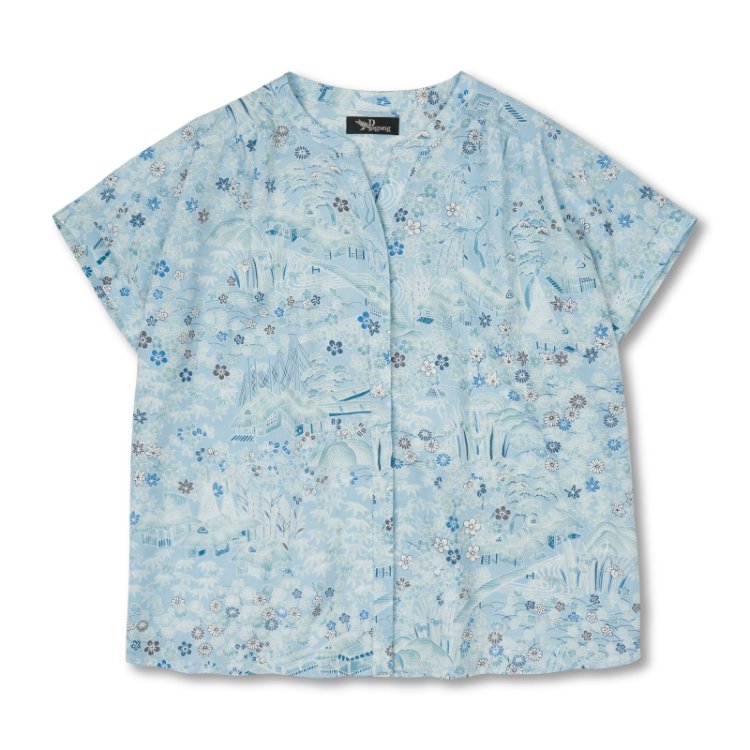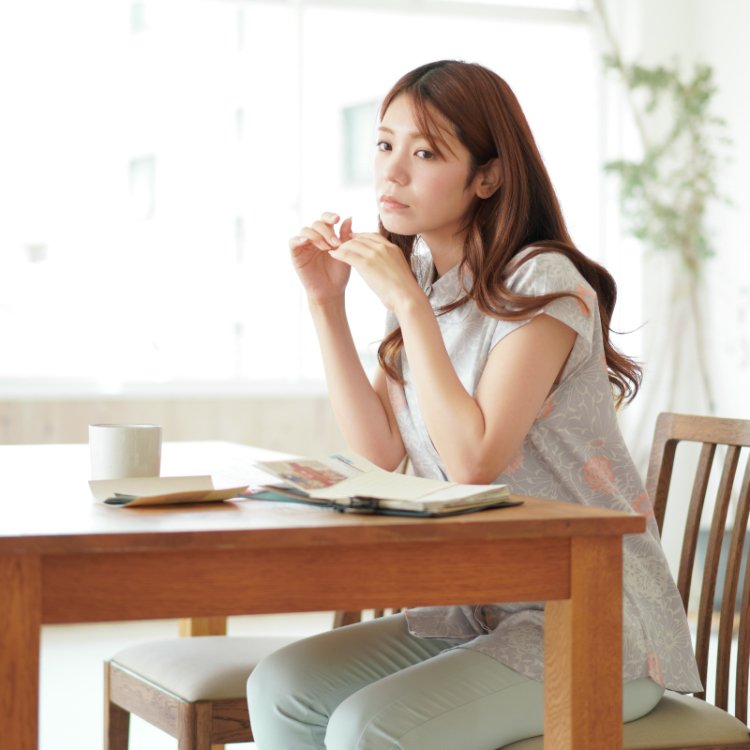CHAYATSUJI Mao Collar Blouse
Color / Water Blue and Multi-color Care Instruction
Japanese name / 茶屋辻 ( CHAYATSUJI )
-About-
In the early Edo period (slightly prior to Yuzen dyeing), this was a kimono worn by the Ooku and Gosanke families of the Tokugawa family from May to September.Use by the general public was prohibited. The kimono is a single-layered summer kimono made of high-quality linen. Initially, it was worn as underwear under costumes, but by the Edo period it had come to be treated as summer outerwear. ”Chaya Tsuji'' uses advanced indigo dyeing techniques said to have been invented by Shirojiro Chaya, and is dyed with landscapes that combine buildings, plants, and running water. Many of the patterns expressed the literary meanings of classical and dynastic literature such as Noh songs and The Tale of Genji, and were patterns that expressed the culture of the upper class. Originally, they were dyed in shades of indigo on a white background, but from the mid-Edo period onward, they began to be embroidered with colored threads and began to use multiple colors.After the Meiji period, Chaya Tsuji was accepted by the general public as a high-class item, and later it became a detailed all-over pattern such as the seaside and cool scenery of the waterside, and even today it is mainly used as a summer pattern on silk products. It is dyed.The classy and cool Chaya Tsuji pattern is a pattern that will keep you cool and content on today's hot and humid day.
・Cotton 75% / Rayon 25%
・Made in Japan
・Hand-wash
・Model ( 5 feet, 3 inches )
Currency : US Dollar (USD)
Color / Water Blue and Multi-color Care Instruction
Japanese name / 茶屋辻 ( CHAYATSUJI )
-About-
In the early Edo period (slightly prior to Yuzen dyeing), this was a kimono worn by the Ooku and Gosanke families of the Tokugawa family from May to September.Use by the general public was prohibited. The kimono is a single-layered summer kimono made of high-quality linen. Initially, it was worn as underwear under costumes, but by the Edo period it had come to be treated as summer outerwear. ”Chaya Tsuji'' uses advanced indigo dyeing techniques said to have been invented by Shirojiro Chaya, and is dyed with landscapes that combine buildings, plants, and running water. Many of the patterns expressed the literary meanings of classical and dynastic literature such as Noh songs and The Tale of Genji, and were patterns that expressed the culture of the upper class. Originally, they were dyed in shades of indigo on a white background, but from the mid-Edo period onward, they began to be embroidered with colored threads and began to use multiple colors.After the Meiji period, Chaya Tsuji was accepted by the general public as a high-class item, and later it became a detailed all-over pattern such as the seaside and cool scenery of the waterside, and even today it is mainly used as a summer pattern on silk products. It is dyed.The classy and cool Chaya Tsuji pattern is a pattern that will keep you cool and content on today's hot and humid day.
・Cotton 75% / Rayon 25%
・Made in Japan
・Hand-wash
・Model ( 5 feet, 3 inches )
Currency : US Dollar (USD)
Color / Water Blue and Multi-color Care Instruction
Japanese name / 茶屋辻 ( CHAYATSUJI )
-About-
In the early Edo period (slightly prior to Yuzen dyeing), this was a kimono worn by the Ooku and Gosanke families of the Tokugawa family from May to September.Use by the general public was prohibited. The kimono is a single-layered summer kimono made of high-quality linen. Initially, it was worn as underwear under costumes, but by the Edo period it had come to be treated as summer outerwear. ”Chaya Tsuji'' uses advanced indigo dyeing techniques said to have been invented by Shirojiro Chaya, and is dyed with landscapes that combine buildings, plants, and running water. Many of the patterns expressed the literary meanings of classical and dynastic literature such as Noh songs and The Tale of Genji, and were patterns that expressed the culture of the upper class. Originally, they were dyed in shades of indigo on a white background, but from the mid-Edo period onward, they began to be embroidered with colored threads and began to use multiple colors.After the Meiji period, Chaya Tsuji was accepted by the general public as a high-class item, and later it became a detailed all-over pattern such as the seaside and cool scenery of the waterside, and even today it is mainly used as a summer pattern on silk products. It is dyed.The classy and cool Chaya Tsuji pattern is a pattern that will keep you cool and content on today's hot and humid day.
・Cotton 75% / Rayon 25%
・Made in Japan
・Hand-wash
・Model ( 5 feet, 3 inches )
Currency : US Dollar (USD)


































































